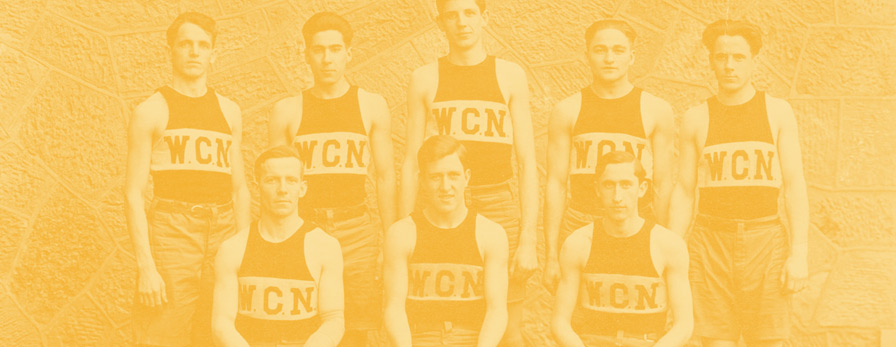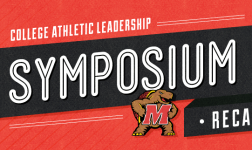We reviewed nearly 400 contracts in men’s basketball and football for the 2010-2011 season, 77 of which included various attendance incentives. Among this sample, these incentives were categorized three different ways:
1. Based solely on season tickets
2. Other (based on individual game attendance, ticket revenue, etc.)
3. A combination of the above
Every contract with attendance incentivesis tailored to the university and sport in question. Bigger schools have bigger incentives, and bigger programs have higher standards for bonuses
Of the 383 contracts surveyed, 214 were men’s basketball (56%) and 169 were football (44%). Seventy-seven of the 383 contracts included attendance incentives. Of the contracts with attendance bonuses, 51 were men’s basketball (66%) while only 26 were football (34%).
Of the 51 men’s basketball contracts with attendance incentives, only 12 were based uniquely on season ticket sales. Thirty-four were based on something besides season ticket sales; from selling out a certain number of games, to collecting a certain amount of revenue from ticket sales and payments for a certain average attendance. The remaining five contracts were a combination of season ticket measures and other attendance measures.
Among the 26 football contracts with attendance incentives, 10 were based on season tickets. Eleven consisted of other various incentives, and the remaining five were a combination.
In each sport, the largest group was that of assorted non–season ticket incentives, followed by those focused on season tickets and then the combination group.
Each type has its pros and cons. From a financial point of view, the season ticket avenue will collect money regardless of whether the tickets get used. But if the goal is to attract more fans to the arena for a better home field advantage, the other route will ensure that the seats are filled.
The combination approach will allow for a bit of each of these positives. The different options are explored in greater detail below.
1. Based solely on season tickets
Regardless of sport, there are generally two types of incentive programs based on season ticket sales. The first is a tiered system where the coach will receive a certain bonus for a certain number of tickets sold. For example:
University of Louisiana at Monroe – Todd Berry (Football)
During his employment as COACH of the University’s Football team, the COACH shall have the opportunity to receive the following earned salary supplements based upon the total number of football season tickets sold. The number of season tickets sold shall not include trade out season tickets. The supplemental compensation is not cumulative and will be paid as follows:
1. Earned salary supplement of ten-thousand ($10,000.00) dollars if the University sells 5,000 tickets.
2. Earned salary supplement of fifteen-thousand ($15,000.00) dollars if the University sells 6,000 tickets.
3. Earned salary supplement of twenty-thousand ($20,000.00) dollars if the University sells 7,000 tickets.
4. Earned salary supplement of twenty five-thousand ($25,000.00) dollars if the University sells 8,000 tickets.
5. Earned salary supplement of thirty-thousand ($30,000.00) dollars if the University sells 9,000 tickets.
6. Earned salary supplement of thirty five-thousand ($35,000.00) dollars if the University sells 10,000 tickets.
7. Earned salary supplement of forty-thousand ($40,000.00) dollars if the University sells 11,000 tickets.
The second system with season tickets gives the coach a percentage of the revenue gained from selling a certain number of season tickets. For example:
East Tennessee State University – Murry Bartow (Men’s Basketball)
The University shall provide to Coach a bonus for an increase in season ticket sales. Bonus shall be 5% of the ticket revenue of more than 1200 season tickets. The amount will be calculated annually by ETSU Athletics Ticket Office. The season ticket amount is comprised of paid season tickets for adult, youth, senior citizen, and ETSU Faculty/ Staff. The number of tickets sold will be derived from the computerized ticketing system utilized in the ETSU athletics ticket office.
2. Other
The “other” category is broad, but necessary because there are many different types of benefits for ticket sales that do not include season tickets. Some coaches receive bonuses for overall gate receipts. For example:
California State University, Long Beach – Dan Monson (Men’s Basketball)
Actual Season Gate: $125,000 and above
Compensation Amount: 10% of gate > $125,000
– Actual Season Gate based on Paciolan ticket revenue information provided by the Pyramid Box Office.
– Compensation calculation will be based on ticket sales for home basketball games and will not include seat related gifts or priority seating.
Very similar to the above method, some universities have a bonus structure based on ticket sales, but use a tiered system.
Western Michigan University – Steve Hawkins (Men’s Basketball)
For each year University determines that, by NCAA standard, the attendance by paid admission tickets for each home men’s basketball game averages 3,500 for the season, University will pay Employee a 2.5% bonus of Employee’s current base salary. For each year University determines that, by NCAA standard, the attendance by paid admission tickets for each home men’s basketball game averages 4,000 for the season, University will pay Employee a 4% bonus of Employee’s then current base salary instead of the aforementioned 2.5% bonus. For each year University determines that, by NCAA standard, the attendance by paid admission tickets for each home men’s basketball game averages 5,000 for the season, University will pay Employee a 5% bonus of Employee’s then current base salary instead of the aforementioned 4% or 2.5% bonus.
Another type of attendance incentive is based on increased ticket sales as opposed to just a certain predetermined value. For example:
Bowling Green State University – Dave Clawson (Football)
Coach Clawson shall be eligible for the payment of an incentive based on total home game ticket sales for each season. Such an incentive shall be based on a “baseline” per home game ticket revenue amount that averages the three (3) previous seasons (2006, 2007 and 2008). The bonus shall be tiered based upon escalating threshold amounts above the baseline number. The first tier consisting of ten (10) to fourteen (14) percent growth will provide Coach Clawson a $5,000 bonus; the second tier consisting of fifteen (15) to nineteen (19) percent growth will provide Coach Clawson an $8,000 bonus; the third tier consisting of twenty plus (20+) percent growth will provide Coach Clawson a $12,000 bonus. As deemed necessary by the AVP/DIA, any revenue derived from, and tickets purchased by, BGSU or the BGSU Foundation for the primary purpose of maintaining BGSU’s NCAA attendance requirement will not be included in the incentive calculation.
Yet another example of an “other” type of attendance incentive involves reaching a certain attendance level. An example of this is below:
Central Michigan University – Dan Enos (Football)
If football attendance for all home football games exceeds an average of 25,000 persons for the football season as reported by the University’s game day internal audit, Coach will receive an additional three thousand dollars ($3,000). There are also universities that use a similar incentive program, but with a tiered system.
University of Cincinnati – Mick Cronin (Men’s Basketball)
Coach shall be eligible to receive additional incentive compensation each year based upon average regular season per game attendance payable no later than sixty (60) days after the last game of the regular basketball season, including exhibition games. Calculation is based on paid attendance and excludes student tickets:
Average Paid Attendance Incentive Amount
7,500 $7,000
8,000 $10,000
9,000 $15,000
3. Combination
The third type of attendance incentive includes various combinations of incentives based around season ticket sales and those listed above. This type allows the university to reap the benefits of both types of attendance incentives. For example:
Montana State University, Bozeman – Rob Ash (Football)
Each year Coach helps promote sale of paid season tickets sales to sold out capacity, the University will pay Coach $5,000
Each year Coach helps promote sellout for five of six home games of paid individual ticket sales per game, the University will pay Coach $2,500
University of Washington – Lorenzo Romar (Men’s Basketball)
$5,000 if attendance at home basketball games increases by 10% or more over the previous year’s paid attendance or the season tickets are sold out
Jackson State University – Rick Comegy (Football)
Paid Home Attendance Average (20,000 or more) – $5,000.00/year Selling 10,000 Season Tickets – $2,000.00/year
Virginia Commonwealth University – Shaka Smart (Men’s Basketball)
Season Ticket Sales
Over 2,000 $3,000
Over 2,500 $4,000
Over 3,000 $5,000
Over 3,500 $6,000
Average Home Attendance (announced, non-cumulative)
Over 5,500 $3,000
Over 6,000 $4,000
Key Insights
Regardless of type, attendance clauses can be a win-win situation for coaches and universities. While the coach receives a financial reward for hitting contract goals, the university cashes in on increased ticket sales and the accompanying benefits.




